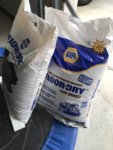TN_Jim
Omono
right...whew...I paraphrased milehigh_7 in a reply to the post paraphrased, in order to expound on it..specifically regarding what properties may make a product a different “beast”
I get all redundant when on the bath salts
I get all redundant when on the bath salts


